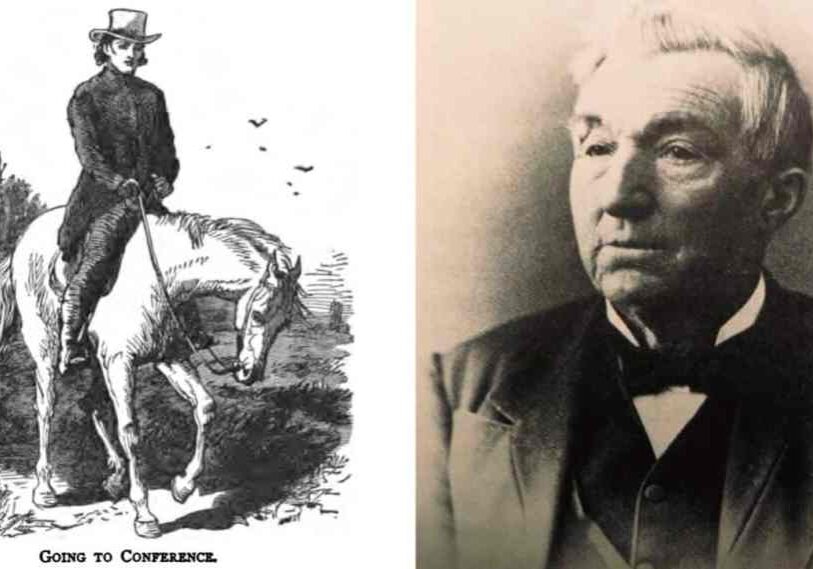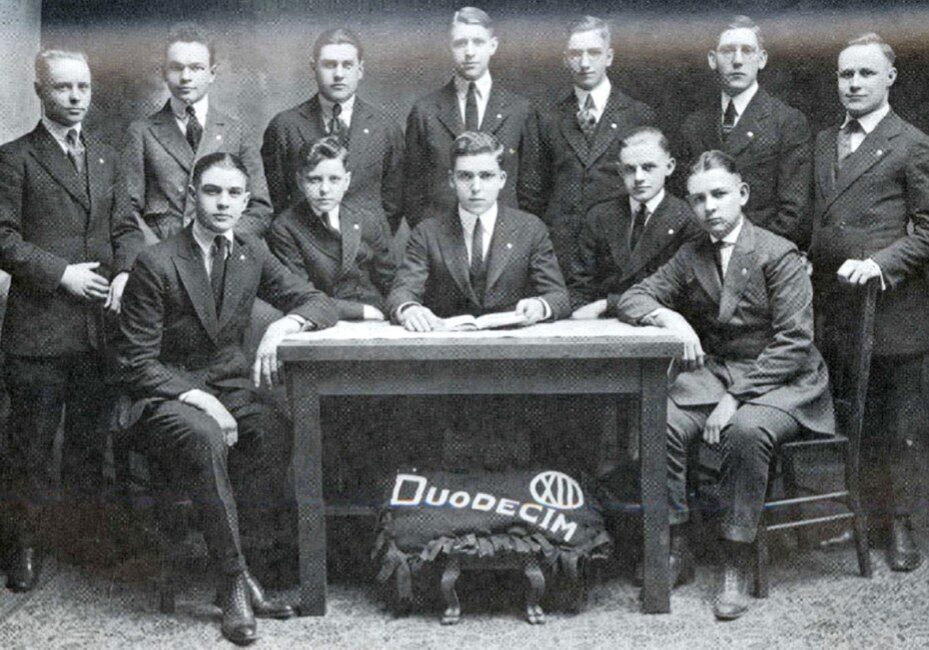Minnesota Marine Art Museum Showcases Global and Local Visions of Life on the Water
Six galleries, outdoor riverfront spaces and rotating world-class exhibits make MMAM a must-visit Driftless destination.

WINONA — The Port of Winona, Minn., is a bustling place – a major transportation hub for southeastern Minnesota businesses and communities.
Barge-loads of cement, fertilizer and steel are distributed into railroad cars while semi-truckloads of area grain crops pour into the empty vessels; powerful towboats move back and forth, assembling the barges into flotillas for transport down the Mississippi.
A busy industrial area like this might seem like an odd place to look for an art museum, but right down the road you’ll find the Minnesota Marine Art Museum (MMAM), one of the Driftless Region’s most innovative cultural institutions.
The museum’s mission is to engage “visitors and the community with great art inspired by water,” which makes the location on the working river ideal.
Indeed, the Mississippi River serves as the “free spot” on the bingo cards visitors can complete as they view the galleries. Visible from Gallery One, the Mighty Mississippi serves as a constant inspiration.

Caption: 2025 Launch Party for Edward Burtynsky: Water exhibit. (Photo by Bailey Bolton for the MMAM)
Scott Pollock, Executive Director of MMAM, says “The Minnesota Marine Art Museum is committed to celebrating and amplifying the work of artists that are using their practice to deeper connect us to water and waterways.”
Opened in 2006, MMAM is a beautifully designed facility, with six galleries in a specially-designed building whose architecture evokes both the saltbox homes of the East Coast and the sleek lines of nautical facilities.
The expansive outside space is considered the seventh gallery and it stretches along the water, layered with a landscape of prairie flowers, river birch and stone. The Riverwalk paved balcony gives visitors a scenic picnic spot; a viewing platform of the working towboats; a live panorama of Bald Eagles, birds and other wildlife; and a welcoming space for outdoor concerts and gatherings.

Native prairie grasses, flowers and stone create the welcoming MMAM’s “Seventh Gallery” outdoor space along the Mississippi River. (Photo by Bailey Bolton for the MMAM)
A broad look at everything marine
The museum includes traditional “marine art” focusing on portrayals of ships and the sea, particularly during the 17th to 19th centuries. At its most traditional, their marine art presents historically important details of life on or near the sea: lighthouses, beachgoers, seaside cottages, coastal rock formations and historically important renderings of ships no longer in use, fully rigged, often negotiating a battery of stormy waves. Indeed, some marine art serves as actual historical records, as in William Bradford’s paintings of Arctic expeditions, part of MMAM’s collection.
But as you will find when you visit MMAM, this fascinating genre can expand to include a broad array of depictions. Gallery Four, called “Fluid,” offers an array of works representing various interpretations of art inspired by water, all from the museum’s permanent collection.
From “Empire Builder,” Sonja Peterson’s intricate representation of global expansion rendered in a huge work of papercutting, to Anna Metcalfe’s exquisite rendering of Lake Superior as a mobile of ceramic canoes, these works invite visitors to broaden their conception of what marine art can be.
For a museum with a relatively small acquisitions budget, the MMAM provides an impressive variety of art on display, changing themes each year and rotating exhibitions frequently. Since 94% of all art owned by museums is in storage, Pollock says the most effective way to augment the exhibitions of a small museum is to cultivate active lending partnerships with museum partners.
In 2024, such partnering led to the impressive and thought-provoking exhibition, “A Nation Takes Place,” a guest-curated show that featured works from over 20 institutions, including The Metropolitan Museum of Art in New York. This collection challenged visitors to consider the exploitation of water throughout history – both as an unwitting accomplice to carry enslaved people across oceans or as an innocent transporter of toxins, waste products and trash.
Gallery Six displays the most recent partnering exhibition, “A Spectacle In Motion: The Grand Panorama of a Whaling Voyage ‘Round the World,” on loan from the New Bedford Whaling Museum.

Museum staff and volunteers carefully rotate the 1000+-foot “Grand Panaroma” scrolled artwork. Visit this link to find the next scheduled advancement date. (Photo courtesy of Minnesota Marine Art Museum)
This exhibition explores a number of cultural questions: What did Americans do for fun in 1848? What constitutes a “spectacle”? How can people view a painting that is 1,275 feet long? What kind of adventure was a whaling voyage?
Because the MMAM is able to display only forty feet of Grand Panorama at a time, it has published a schedule of the days and times on which volunteers and staff, wearing white cotton gloves, scroll the massive work to its next position. Visitors gather to see the next scene depicted in the new forty-foot stretch of the massive scroll-like work. Now we see another role the museum plays as a community gathering place, a fully accessible, broadly appealing source of ever-changing entertainment.
The focus on water also brings to visitors’ attention the supersaturated air that results from climate change and leads to flooding, the paucity of rain that creates drought and the dramatic shifts in temperature that cause freak storm systems.
Attesting to these impacts is the new exhibition, Oceanus, commissioned by the Mystic Seaport Museum in 2021 and on display at MMAM until January 2026. In this grouping of ten large-scale watercolors and one mural-sized oil painting, Alexis Rockman explores the unseen impact of human activity on the enormous realm of the world’s oceans, employing a horizontal division of the picture plane to convey the distinction between the zones above and below the water.
Another perspective on the relationship between humans and water appears in the exhibition Once Upon A Shore, on view in MMAM’s Book Arts Gallery. This collection of works by Minnesota Native Nations artists, organized by poet and art curator Heid Erdrich, represents a multidisciplinary approach to storytelling “at the water’s edge.” Here, water’s role in the lives and belief systems of Indigenous peoples of Minnesota trickles through a variety of “texts,” including ledger paintings, poetry, beadwork, and children’s picture books.

Piece created entirely out of discarded plastic and other materials by artist Erik Jon Olson in his exhibit “Waste Not” at the Minnesota Marine Art Museum in Winona. (Photo by Bailey Bolton for the MMAM)
Accessible art for everyone
An example of MMAM’s active role in promoting Minnesota artists is also shown in Erik Jon Olson’s exhibition Waste Not, which invites visitors to consider their own personal involvement with the proliferation of plastic across the planet.
Every work in this grouping of quilted installations was created from plastic waste and manufacturing remnants, all collected by Olson and reborn as visions of sea turtles rafting, human communities adapting to rising water and microplastics entering the bloodstreams of fish and people. One corner of this gallery offers visitors the opportunity to weave their own bit of plastic into a communal artwork.

A bin of material for patrons to weave into an original installation at MMAM. (Photo by Bailey Bolton for the MMAM)
MMAM takes seriously the goal of making art accessible to all, and one way it accomplishes this is to host a variety of events.
Its Mississippi Sippin’ gatherings on Thursday evenings throughout the summer months provide music performances, food trucks and late open hours for the galleries.
Toddler Tuesdays present families with age-appropriate projects and free play.
During designated weeks throughout the school year, trained docents lead K-12 students on educational tours, incorporating a “Longer Look” module that promotes critical thinking.
Four times a year, the Seasonal Saturday program offers $1 admission, live music, free art projects, guided tours of the galleries and special enrichment offerings. These events bring 500 to 800 visitors on a single day, many from the Twin Cities, Rochester and La Crosse.
With only 29,000 residents, many visitors to MMAM are surprised at its presence in the small community of Winona. However, Winona’s growth as an arts destination has included not only the development of this fantastic museum but also the Beethoven Festival, the Frozen River Film Festival, the Great River Shakespeare Festival, the Mid West Music Fest, the Sandbar Storytelling Festival and many other events.
It’s no surprise that the Minnesota Marine Art Museum fits perfectly into this landscape of artistic endeavor and appreciation!
More information on hours, exhibits and upcoming events can be found on the MMAM website.

An interactive woven art installation created by patrons and inspired by Erik Jon Olson. (Photo by Bailey Bolton for the MMAM)
Root River Current’s coverage of the arts is made possible, in part, by the voters of Minnesota through a grant from the Southeastern Minnesota Arts Council thanks to a legislative appropriation from the arts & cultural heritage fund.






